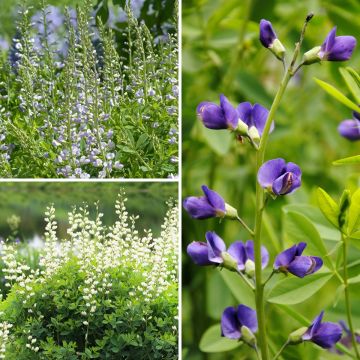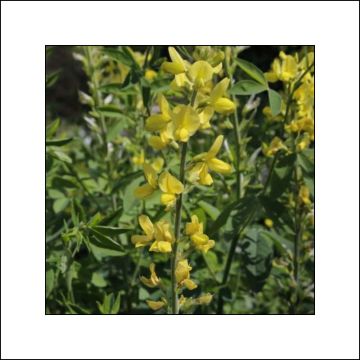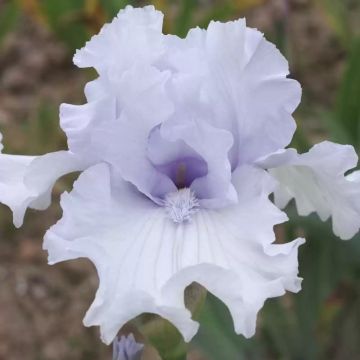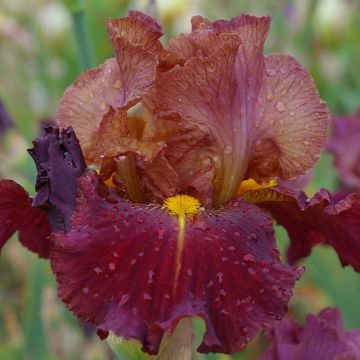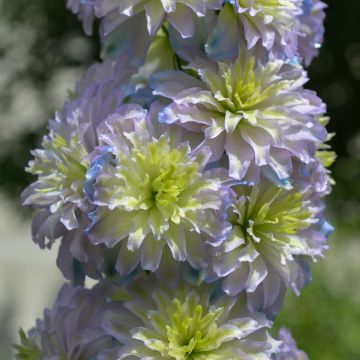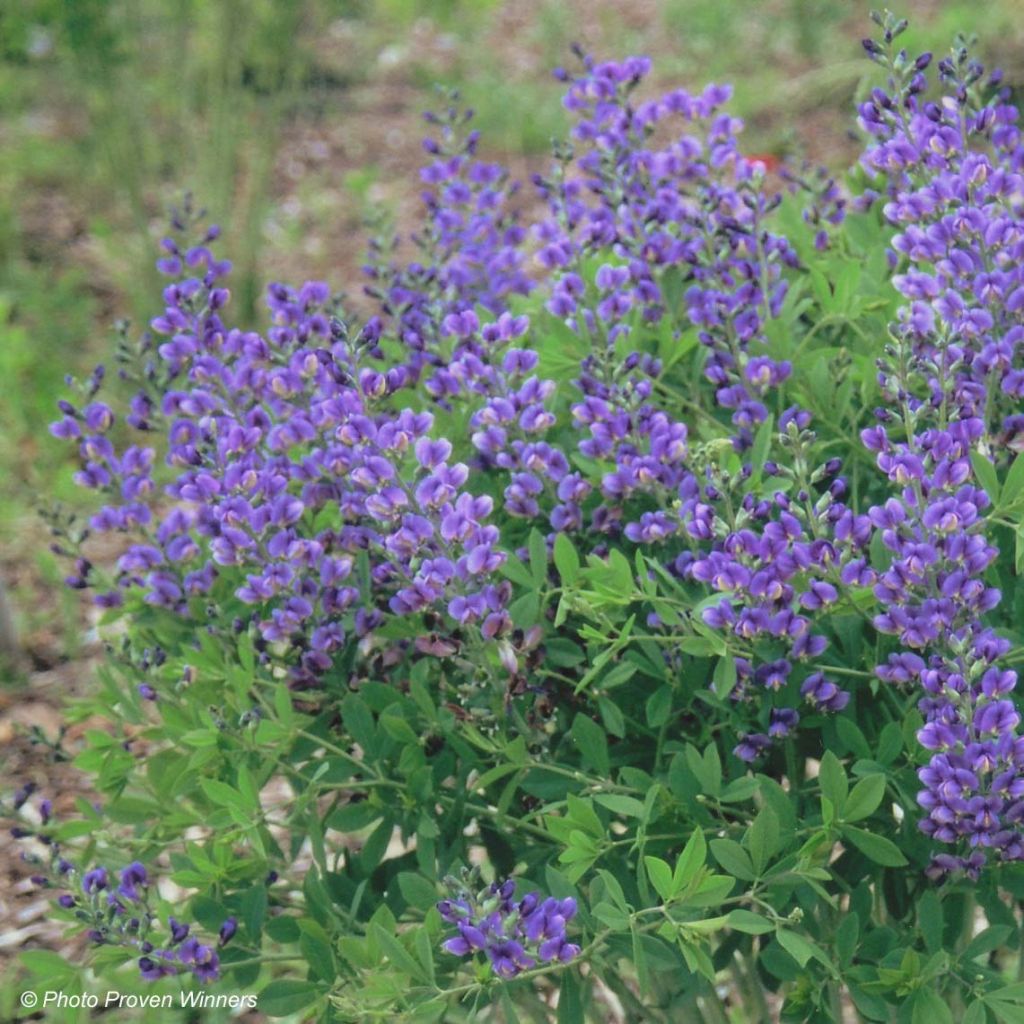

Baptisia Decadence Series Blueberry Sundae - False Indigo


Baptisia Decadence Series Blueberry Sundae - False Indigo
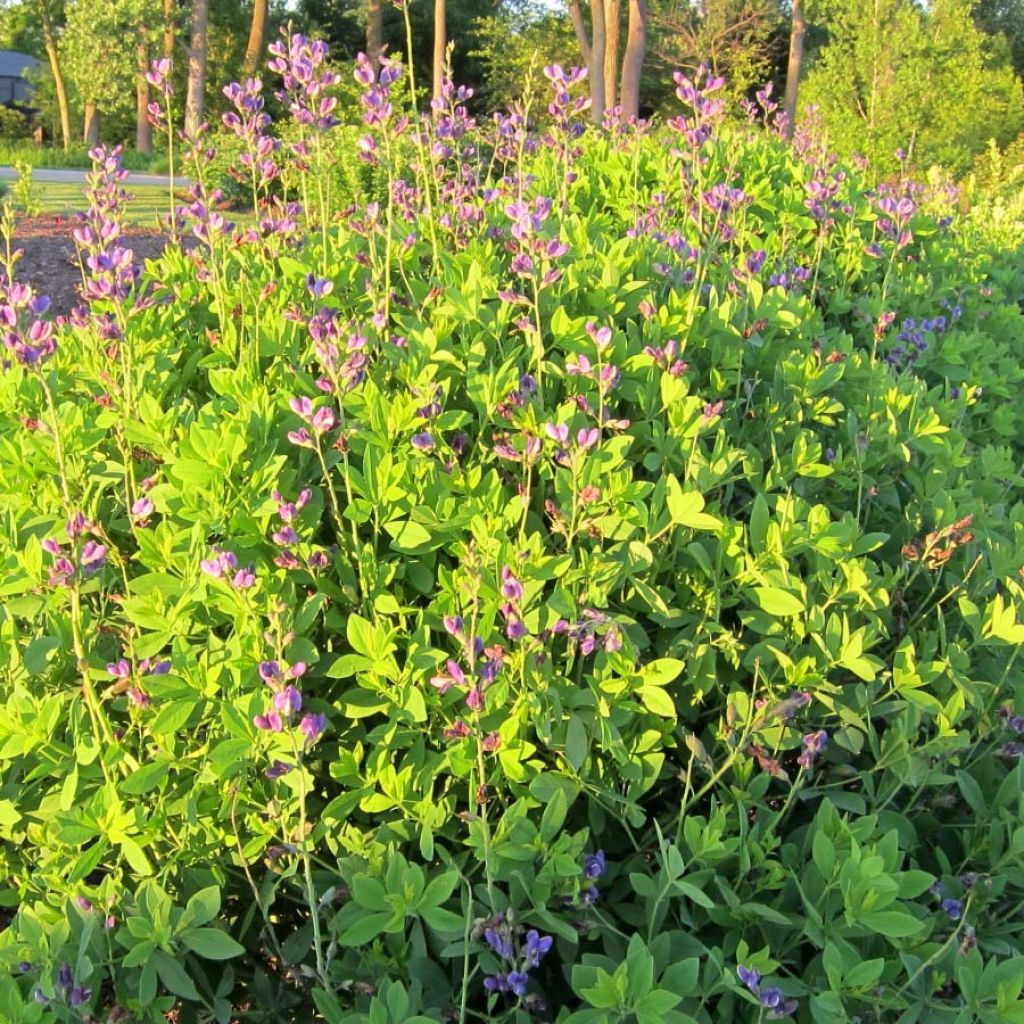

Baptisia Decadence Series Blueberry Sundae - False Indigo
Baptisia Decadence Series Blueberry Sundae - False Indigo
Baptisia x australis Decadence ® Blueberry Sundae
False Indigo, Blue Wild Indigo
This item cannot be shipped to the selected country
Delivery charge from €5.90
Delivery charge from €5.90
More information
Schedule delivery date,
and select date in basket
This plant carries a 12 months recovery warranty
More information
We guarantee the quality of our plants for a full growing cycle, and will replace at our expense any plant that fails to recover under normal climatic and planting conditions.
From €5.90 for pickup delivery and €6.90 for home delivery
Express home delivery from €8.90.
From €5.90 for pickup delivery and €6.90 for home delivery
Express home delivery from €8.90.
Does this plant fit my garden?
Set up your Plantfit profile →
Description
Baptisia 'Blueberry Sundae', sun-loving, is an excellent perennial for poor and dry soil also known as Indigo Lupin. This is a hybrid variety belonging to the 'Decadence' series, recently developed in the USA. It stands out for its compact and branched habit, in a dense tuft, and for its generous flowering with a very bright colour: a very bright medium blue, made of a mix of midnight blue buds and cobalt blue pea flowers. The floral spikes appear in late spring, for 3 weeks, and are grouped at the top of a bluish-green alfalfa foliage with an interesting texture, even outside the flowering period. This false lupin can be grown without worry in full sun, in well-drained, light, even poor and dry soil in summer.
Baptisia 'Blueberry Sundae' is a perennial plant from the Fabaceae family resulting from extensive research and hybridization work. Its ancestors, including the best known is perhaps Baptisia australis, are all native to the prairies and woods of the eastern and central United States. They grow there among tall grasses, without any care, perfectly tolerating frost and dry summers.
The 'Blueberry Sundae' variety forms a bushy and branched tuft reaching 80-90cm (32-35in) in all directions. Flowering takes place in June, in the form of papilionaceous flower spikes in very bright blue tones, highly visited by butterflies. The foliage, which disappears in winter, is also very ornamental when swaying in the wind. It consists of leaves divided into three large rounded leaflets, with a slightly bluish green colour, resembling those of alfalfa or clover. This Baptisia, like many plants in the Fabaceae family, secretly develops a powerful and deep root system underground, capable of fixing nitrogen from the air through specific bacteria housed in small nodules. This very perennial plant slowly expands over time.
Baptisias are close relatives of lupins, which are much better known in Europe, but they are much less demanding in terms of soil and moisture. They have very robust roots that allow them to live for a long time in our gardens, but they require time to establish themselves. A true all-terrain plant, the 'Blueberry Sundae' indigo lupin will find its place in a romantic garden, a dry garden, or in natural areas. It is also useful for decorating a degraded land, which often surrounds a recently built house. It looks stunning alongside roses ('Alissar, Princess of Phoenicea', 'The Fairy'...), Camassia leichtlinii 'Alba Semiplena', Eremurus himalaicus, or Allium bulgaricum. It also pairs well with purple linarias or hybrid mulleins and three-flowered roses, which are equally spectacular.
Report an error about the product description
Baptisia Decadence Series Blueberry Sundae - False Indigo in pictures


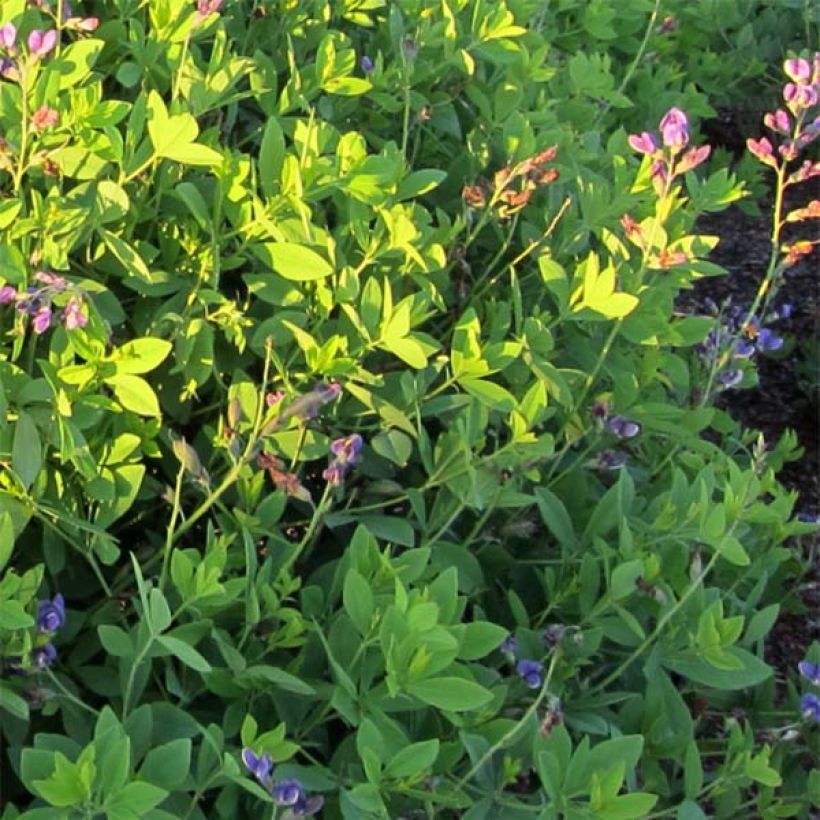



Flowering
Foliage
Plant habit
Botanical data
Baptisia
x australis
Decadence ® Blueberry Sundae
Fabaceae
False Indigo, Blue Wild Indigo
Cultivar or hybrid
Other Baptisia
Planting and care
Establishing Baptisia 'Blueberry Sundae' takes some care.
It is worth soaking the plant in a bucket before planting but not for too long so as not to bend the taproot.
The addition of horticultural grit or fine gravel to the planting hole will help drainage.
Water well during the first year.
Beware! Voles are very fond of the fleshy taproot.
Planting period
Intended location
Care
-
, onOrder confirmed
Reply from on Promesse de fleurs
Spring flowering perennials
Haven't found what you were looking for?
Hardiness is the lowest winter temperature a plant can endure without suffering serious damage or even dying. However, hardiness is affected by location (a sheltered area, such as a patio), protection (winter cover) and soil type (hardiness is improved by well-drained soil).

Photo Sharing Terms & Conditions
In order to encourage gardeners to interact and share their experiences, Promesse de fleurs offers various media enabling content to be uploaded onto its Site - in particular via the ‘Photo sharing’ module.
The User agrees to refrain from:
- Posting any content that is illegal, prejudicial, insulting, racist, inciteful to hatred, revisionist, contrary to public decency, that infringes on privacy or on the privacy rights of third parties, in particular the publicity rights of persons and goods, intellectual property rights, or the right to privacy.
- Submitting content on behalf of a third party;
- Impersonate the identity of a third party and/or publish any personal information about a third party;
In general, the User undertakes to refrain from any unethical behaviour.
All Content (in particular text, comments, files, images, photos, videos, creative works, etc.), which may be subject to property or intellectual property rights, image or other private rights, shall remain the property of the User, subject to the limited rights granted by the terms of the licence granted by Promesse de fleurs as stated below. Users are at liberty to publish or not to publish such Content on the Site, notably via the ‘Photo Sharing’ facility, and accept that this Content shall be made public and freely accessible, notably on the Internet.
Users further acknowledge, undertake to have ,and guarantee that they hold all necessary rights and permissions to publish such material on the Site, in particular with regard to the legislation in force pertaining to any privacy, property, intellectual property, image, or contractual rights, or rights of any other nature. By publishing such Content on the Site, Users acknowledge accepting full liability as publishers of the Content within the meaning of the law, and grant Promesse de fleurs, free of charge, an inclusive, worldwide licence for the said Content for the entire duration of its publication, including all reproduction, representation, up/downloading, displaying, performing, transmission, and storage rights.
Users also grant permission for their name to be linked to the Content and accept that this link may not always be made available.
By engaging in posting material, Users consent to their Content becoming automatically accessible on the Internet, in particular on other sites and/or blogs and/or web pages of the Promesse de fleurs site, including in particular social pages and the Promesse de fleurs catalogue.
Users may secure the removal of entrusted content free of charge by issuing a simple request via our contact form.
The flowering period indicated on our website applies to countries and regions located in USDA zone 8 (France, the United Kingdom, Ireland, the Netherlands, etc.)
It will vary according to where you live:
- In zones 9 to 10 (Italy, Spain, Greece, etc.), flowering will occur about 2 to 4 weeks earlier.
- In zones 6 to 7 (Germany, Poland, Slovenia, and lower mountainous regions), flowering will be delayed by 2 to 3 weeks.
- In zone 5 (Central Europe, Scandinavia), blooming will be delayed by 3 to 5 weeks.
In temperate climates, pruning of spring-flowering shrubs (forsythia, spireas, etc.) should be done just after flowering.
Pruning of summer-flowering shrubs (Indian Lilac, Perovskia, etc.) can be done in winter or spring.
In cold regions as well as with frost-sensitive plants, avoid pruning too early when severe frosts may still occur.
The planting period indicated on our website applies to countries and regions located in USDA zone 8 (France, United Kingdom, Ireland, Netherlands).
It will vary according to where you live:
- In Mediterranean zones (Marseille, Madrid, Milan, etc.), autumn and winter are the best planting periods.
- In continental zones (Strasbourg, Munich, Vienna, etc.), delay planting by 2 to 3 weeks in spring and bring it forward by 2 to 4 weeks in autumn.
- In mountainous regions (the Alps, Pyrenees, Carpathians, etc.), it is best to plant in late spring (May-June) or late summer (August-September).
The harvesting period indicated on our website applies to countries and regions in USDA zone 8 (France, England, Ireland, the Netherlands).
In colder areas (Scandinavia, Poland, Austria...) fruit and vegetable harvests are likely to be delayed by 3-4 weeks.
In warmer areas (Italy, Spain, Greece, etc.), harvesting will probably take place earlier, depending on weather conditions.
The sowing periods indicated on our website apply to countries and regions within USDA Zone 8 (France, UK, Ireland, Netherlands).
In colder areas (Scandinavia, Poland, Austria...), delay any outdoor sowing by 3-4 weeks, or sow under glass.
In warmer climes (Italy, Spain, Greece, etc.), bring outdoor sowing forward by a few weeks.





































